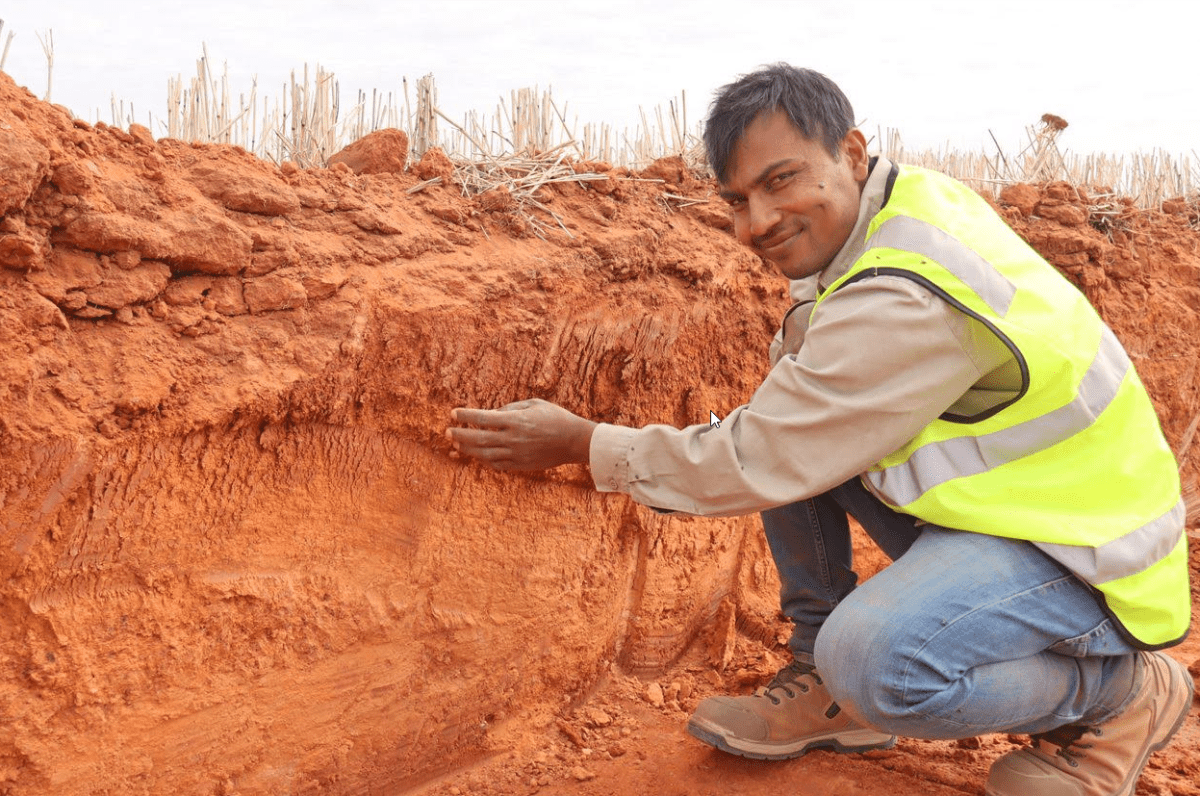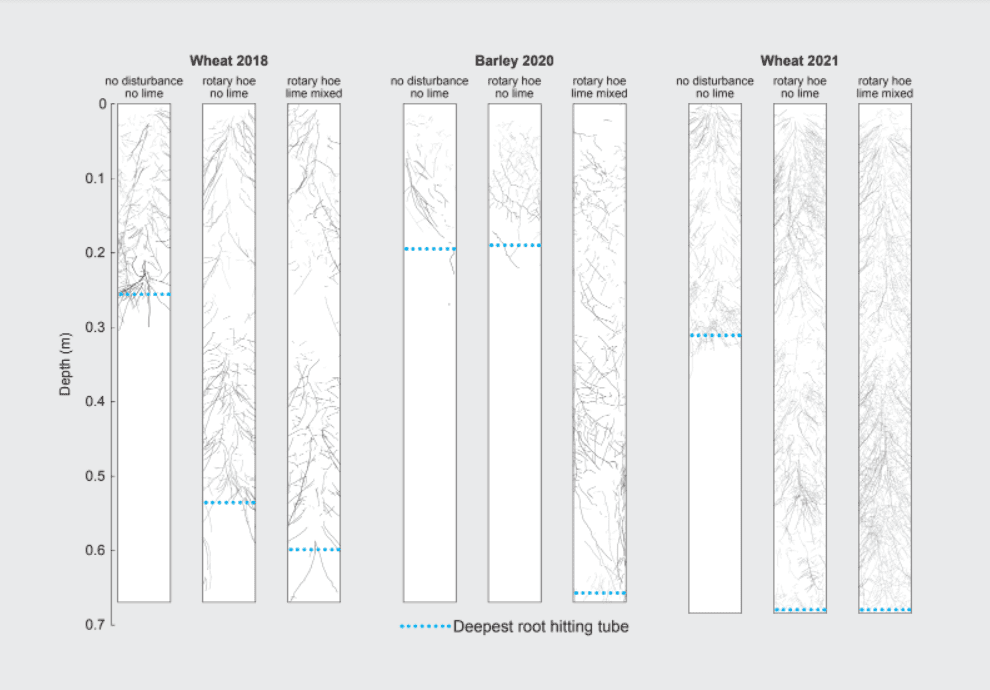
DPIRD research scientist and project leader Gaus Azam looks over a trial site at Bonnie Rock, where the site has recently been excavated to a depth of 80cm. Photo: WA DPIRD
WESTERN Australian field trials are breaking new ground in a research effort to overcome multiple soil constraints and boost grain yields.
Department of Primary Industries and Regional Development (DPIRD) researchers have prepared five new field experimental sites this season, using a combination of soil amelioration techniques and full soil profile reengineering.
The sites – at Bonnie Rock, Salmon Gums, Holt Rock, Carnamah and Toolbrunup – are using a combination of deep soil loosening, reconstituting profile layers and deep placement of nutrients and soil amendments to optimise water and nutrient-use efficiencies for grain crops.
The $22-million project, with co-investment from DPIRD and the Grains Research and Development Corporation, aims to define grain-yield potential in the absence of soil constraints, with a view to developing the most profitable and long-lasting strategies to manage these constraints.
It focuses on 12 million hectares of arable land covering diverse soil types – including deep sand, texture-contrast soil (duplex) and heavy sodic and boron-toxic soil – in the low to high-rainfall areas of WA where subsoil compaction, subsoil acidity, sodicity and water repellence regularly occur in combination.
The sites are fitted out with soil-moisture probes and root architecture-monitoring devices for live monitoring of soil-water use and crop roots.
DPIRD research scientist and project leader Gaus Azam said the wheat, barley and canola crops sown in this season’s experiments were on challenging soils and had received the most ambitious soil reengineering treatments in this project to date.
“We are working on heavier soils which are sodic and alkaline, making it hard for water to infiltrate the soil and the crops are prone to boron toxicity,” Dr Azam said.
“The sites have been dug up to 80cm, heavy soil was mixed with sand to modify the soil texture, and treatments applied include compost, biochar, chaff and gypsum.”

Plant root distribution, captured by in situ soil cameras, shows marked improvement of a wheat and barley crop root penetration following reengineering of soils. Photo: WA DPIRD
Improved crop-root systems
Dr Azam said the overall aim was to improve the access of crop root systems to water and nutrients stored in the subsoil.
“While previous research has examined single soil constraints, this research is looking at what are the next steps to overcome multiple constraints and get the next big jump in yields,” he said.
There are seven other sites established in previous seasons which are being monitored as part of the project, with some already showing a significant yield increase.
“Sites prepared on sandplain country in Bolgart and Northampton last season were also excavated to a depth of 80cm, clay was incorporated for better water holding capacity and lime, compost and inorganic nutrients were also applied,” Dr Azam said.
“Northampton responses were promising with wheat yield in the best treatment of 3.26 tonnes per hectare, well above the paddock average of 0.97 t/ha. However, the Bolgart site had poor establishment and did not respond well.”
Four field experiments near Meckering, York, Tarin Rock and Kojaneerup sown last season had loamy duplex soils, were also excavated to a depth of 80cm and had a range of amelioration treatments applied.
“At Meckering, canola at the trial site yielded 3.1t/ha, well above the paddock average of 1.4t/ha.
“At the site east of York, wheat yielded 5.1 t/ha at the trial, compared to 3.5 t/ha for the paddock average.
“The Tarin Rock trial yielded 4.1 t/ha, compared with a 1.4 t/ha paddock average.”
The Kojaneerup site did not respond well due to waterlogging.
An initial pilot site at Kalannie, which was established in 2018 on to sandy soils, has also doubled grain yield for the past four seasons.
“We will continue to monitor all of the sites in the project over the next few years, to understand where we can get the most gain.
“This work is helping to establish a new unconstrained yield potential.
“We will also explore further development of machinery that will enable amelioration of multiple soil constraints to optimise grain yield under rainfall limited environments on a commercial scale.”
Source: WA DPIRD

HAVE YOUR SAY